
Our innovative dental website design methodology significantly reduces costs and accelerates production, all while creating stunning, high-converting dental websites.

WEBSITE & SEO CLIENT CASE STUDY
“My new SEO optimized website from My Social Practice has helped us double our new patients each month!”
Dr. Valerie Preston – VP Dental
Dental Website Design That Will Make You Shine
Your dental website is often the first impression potential patients have of your practice. It should look and feel exceptional, accurately representing your practice’s values and quality of care. Patients often gauge the quality of your dental services based on their experience on your website. Show them why you should be their first choice with My Social Practice’s stunning, blazing-fast dental website designs.
LIGHTNING FAST LAUNCH
First draft received within 4 weeks from onboarding instructions.
CUSTOM WEBSITES
First draft received within 8 weeks of onboarding instructions.
Websites That Not Only Look Great but Rank High
We ensure that your new dental website is technically optimized for SEO. Your site will be easily found online and attract new patients. We integrate comprehensive SEO strategies into the development process, including tailored metadata, optimized page speed, and adherence to Google’s technical requirements. Our approach ensures fast loading times, strategic keyword optimization, and full functionality on both mobile and desktop devices. With My Social Practice, you get a website that not only looks exceptional but also ranks high in search results, driving more traffic and generating new patient inquiries.
Adaptive Optimization for All Devices
In today’s digital landscape, Google prioritizes websites that perform exceptionally well on both mobile and desktop platforms. The patient experience is crucial to Google, influencing its recommendations for website development. This means that websites must be designed to provide a flawless experience, regardless of screen size, to rank well in search results. Websites that are not fully optimized for mobile are penalized in search engine rankings. At My Social Practice, we build adaptive websites that seamlessly adjust to different screen sizes. Our approach ensures that both the desktop and mobile versions of your site load quickly, providing an optimal user experience and improving your search engine rankings.
Let Us Take Care of Your Blogging
One of the most important factors for a website to rank well is having a functioning blog with regularly published, custom content. One of the great features of your new website is that it includes a blog. We will launch your blog with several articles already published and continue to add fresh content on an ongoing basis as part of your website service. Unlike many marketing companies, we understand that a website without a blog is like a ship without a sail. Our comprehensive blogging service ensures your site stays relevant, engaging, and optimized for search engines.
Seamless Integration with Social Media & Reviews
A crucial aspect of your website is its role as a social proof statement, and integrating social media accounts and content from platforms like Facebook, Instagram, and TikTok is essential. This integration not only provides social proof but also turns your website into a transparent window into your practice. In today’s world, patients seek authenticity and want to connect with a dental practice they can trust. Displaying social media content and online reviews from platforms like Google Reviews enhances this trust. It creates a dynamic, aesthetically pleasing website that continually updates with fresh content, reflecting the ongoing activities and positive experiences of your practice.
Secure, Safe, and Compliant
Websites must be secure to comply with HIPAA laws, and SSL security is crucial for protecting patient data. Your new website will be built in a HIPAA-compliant manner using the most current security protocols and with the highest attention to protecting patient information. We ensure that every aspect of your website meets stringent security standards, providing peace of mind that your patients’ data is safe and secure. We understand your concern to prioritize your website’s security, protect your practice, and maintain compliance with all relevant regulations.
Endless Third-Party Integrations
We’ll add third-party integrations to your website; we even have a number of them already built in! Request a feature, and we will provide you with some available options. Here are just a few of our most requested integrations:
Your Concerns, Our Priority, Your Peace of Mind
We understand how busy dental practices can be, with limited time to handle all tasks, especially those related to website management. Our team is dedicated to providing outstanding support, ensuring that your concerns are addressed promptly and efficiently. We take care of the technical aspects so you can focus on delivering excellent patient care without worrying about your website. Our unparalleled response times and personalized assistance mean you can trust us to handle your digital needs seamlessly.
Flexible Website Hosting and Management Options
We understand that dental practices have diverse needs when it comes to website management. Some dental practices may require only basic hosting and management, while others need more comprehensive services. That’s why we offer flexible hosting and management plans tailored to your specific requirements. Our basic plans provide simple and effective solutions, while our premium plans include unlimited updates and edits to your website without charging by the hour. This makes us stand out from other marketing companies that bill for minor change. Our competitive pricing ensures that you can dramatically reduce your hosting and management fees with our streamlined, simple plans, allowing you to focus on what matters most – your patients.
WHAT OUR CLIENTS ARE SAYING ABOUT OUR WEBSITES
Frequently Asked Questions
What makes a good dental website?
The quality of a great dental website is a bit subjective, especially when discussing design and aesthetics. However, functionally, a great website needs to be HIPAA compliant, adaptive and mobile-friendly. A dental website needs to load quickly, have SSL and all of the helpful information that a potential patient is looking for. The most important page on your website is the homepage and specifically, the information “above the fold” or before a patient scrolls down.
It’s important that the pertinent information about your practice is “above the fold” so that potential patients don’t have to go far to find the information they are looking for. Your practice name, the doctor’s name, your address, phone number, and value proposition needs to be “above the fold”.
Should I build my own dental practice website or hire a dental website designer?
Your dental website can attract patients to your practice or, it can have an opposite effect and deter users. If you would like to have control over the design of your website or possibly want to cut down on some of the costs of designing, getting a dental website builder is inexpensive and most are fairly easy to use.
If you would like a professional to do this, you would want to start looking for a graphic designer that has had a lot of experience in the dental industry. I would recommend finding a company that works with dentists exclusively. There are hundreds of dental website companies that are great and will provide a fantastic website solution.
If you decide to build your own website using a website builder software and you’ve never attempted this before; remember the words of a wise dentist who told me, ‘that trying to build a website would be like a patient attempting to do their own root canal.’
How much does a dental website cost?
On the low end of the dental websites cost scale, you have DIY and drag-and-drop dental website builders that can be purchased for as low as $50 to $150 per month. On the high end of the scale, you would be hiring a custom agency that has a team of website experts. On that team, you would typically have a website designer, a web graphic designer, a programmer, and possibly an SEO specialist to make sure that the site is built with the latest SEO information and data. A team like this is going to produce a fantastic-looking site and you’ll invest upwards of $8,000 to $10,000.
Before you go out and drop 10k on a website though, please check in with us. We often have a special where our website team will build a new website for free. It requires that the client have at least one of our other services but it saves doctors several thousands of dollars in design cost.
What should a dental website include?
A dental website should include a comprehensive homepage with the relevant information “above the fold” or visible on the page before a patient scrolls down. This would include name, phone, address, and your dental practice’s value proposition. It should also be HIPAA-compliant, including service pages, location pages, dentist bios. It is a good idea to also include explanation videos, great online reviews, online dental scheduling, new patients forms, social media integration, custom content, an updated blog, a before and after gallery, and potentially call tracking.
Learn more about great dental website design from My Social Practice!
What are the latest dental website design trends?
Your site needs to look up to date and professional. It should be clean and not cluttered. You should definitely spend a little bit of money and have professional photography taken of the interior and exterior, op rooms, head shots of your team and some candid photos. One of the latest trends is moving to a parallax design. A parallax design has two layers of imagery over the top and the back layer of imagery scrolls slightly slower than the frontlayer. It gives the website depth.
Most new dental websites are being built with full width images in a responsive theme. These types of designs allow for patients to scroll for information rather than click. Studies have shown that potential patients don’t want to wait for information to load. Rather they would like to scroll. Orthodontic website design, pediatric dental websites and other specialists are finding that their home pages are getting longer and longer allowing for more information to be listed on the homepage.
How do I create a dental website?
The number one dental websites building tool or software is WordPress. I say number one because it’s the most prolific, not because it’s the most efficient. WordPress is an open source website builder and the software is leveraged by most of the dental industries website designers.
When considering dental practice design, it’s simple to build and integrate using WordPress. There are thousands of plugins and functions that help the website to look fantastic. Plugins like Webchat, practice tours, galleries, social media integration, before and after functionality, are all easily integrated into WordPress sites. WordPress may take a few days of focused effort to figure out how to use but once you’ve figured it out you’re golden.
What you should know is that most professional website design companies use services like WordPress and Squarespace to build websites. But what they bring to the table are years of trial and error. So, hiring someone to help you build a site can cut down on your website launch time.
Another way would be to purchase a drag and drop builder like Squarespace or Wix. The learning curve will be much shorter with a builder tool rather than learning WordPress. You’ll end up paying a monthly service fee but they are very reasonable.
How do you market a dental practice with a website?
Once you have a website built you want to make sure that it can be found online. Just because it’s on the internet doesn’t mean that Google is going to show it in their search results. The first step is to submit a sitemap to Google. A sitemap is a framework of your website. Google will index the pages of your website in their search engine so that when potential patients search, it can be found. Once that is done you can start with SEO, which is a dental marketing tactic that helps your website to rank higher than your competition in search results.
How do I write about our dental clinic?
One of the simplest ways to write about your dental clinic is to add a blog to your website. Blogs are short editorial entries on your website. The word ‘blog’ came from combining web+log = blog. Not only are blogs great for letting people know about new services and events with your practice but it also helps with SEO. The toughest part of writing is not where you post the content, it’s actually doing the writing. If you don’t have time to write you can hire a professional copywriter who can do your writing for you.
What is a dental website builder?
A website builder is a software that allows a person who does not know website building code, like HTML, to use a drag and drop interface to build a website. Website builders are usually very simple to use but lack in functionality and customization.
How do I make sure that my dental website SEO is healthy?
If your practice website is not ranking in search then your website SEO is NOT good. The simplest way to do this is to use an ‘incognito’ window and search the phrases that you are questioning whether you’re ranking well for or not. Or, you can have your dental practice SEO specialist here at My Social Practice run a quick audit of your SEO.
Check out this article on optimizing your dental website in 2024.
Are dental office websites difficult to build?
Dental websites can be difficult to build, depending on the builder and support that you have access to. If you’re using a do-it-yourself drag and drop builder interface and you have helpful and consistent support from the company that built the software, then the process may be simple. On the other hand, if you do not have support for the builder that you’re using is difficult to use, then you may want to hire someone. Trying to build a dental website on your own could be a waste of your time and money.
Is a dental website designer expensive?
When considering building a dental website one of the first thoughts is, “How much is this going to cost?” Finding the right dental website company or designer is the first step to figuring out what kind of price range to expect.
Local Dental Website Designer
A local designer is a good option because you can sit down with them face to face. Usually you’ll spend $2,500-$10,000 for a local designer. A typical site design will take 30-40 hours depending on the number of iterations you go through.
Dental Website Marketing Company
This would be a company that serves the dental industry. They may not be local but they will have built hundreds if not thousands of dental websites. You can usually get by without having to pay a big upfront cost on the dental design portion of the project, but depending on their support service, hosting and the breadth of their website management will typically run from $89 a month to $300 per month.

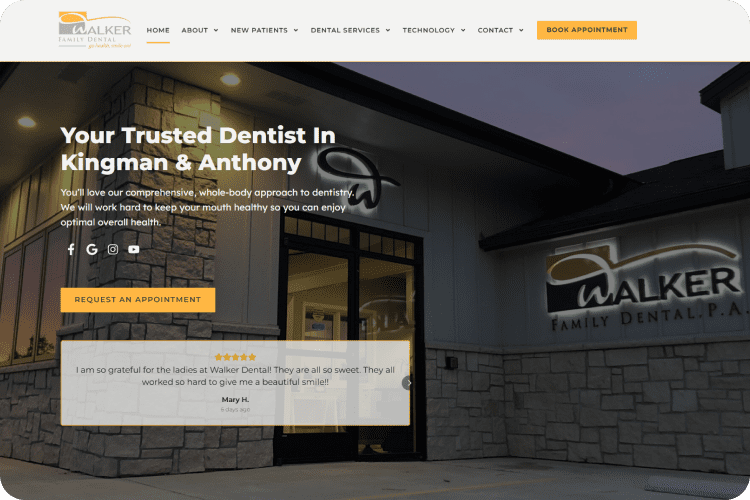
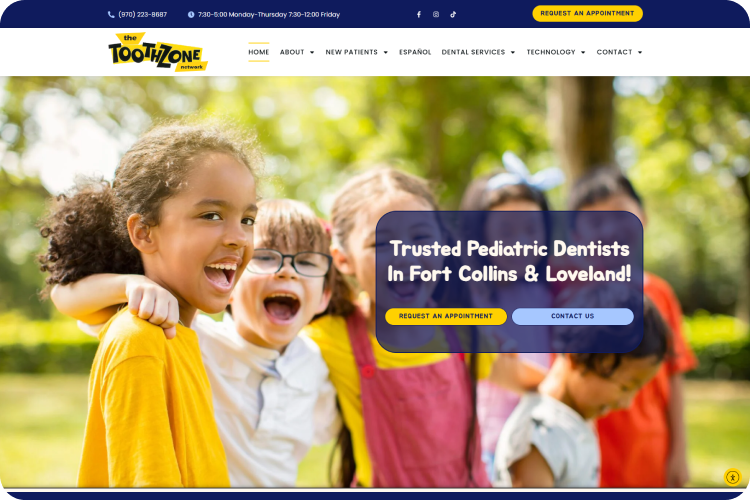
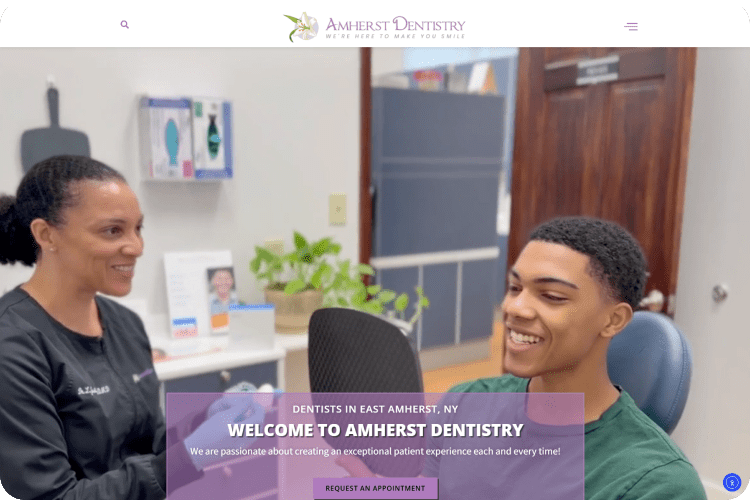
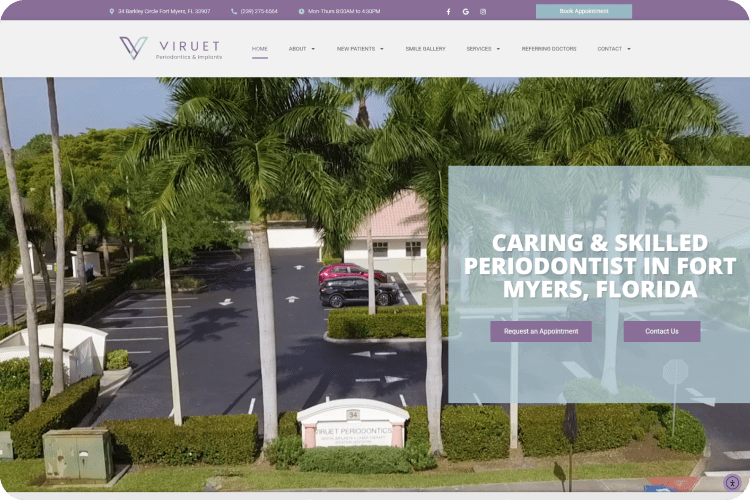
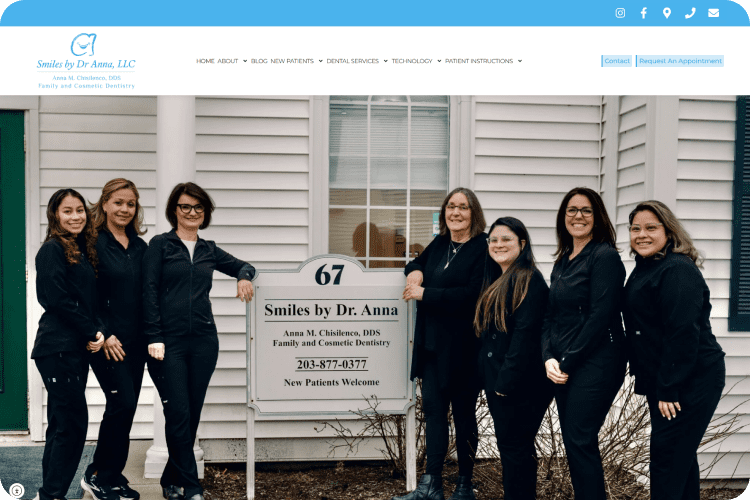
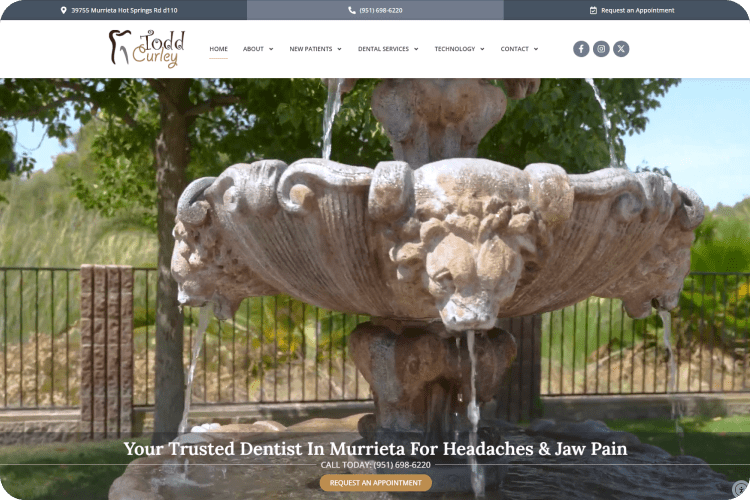



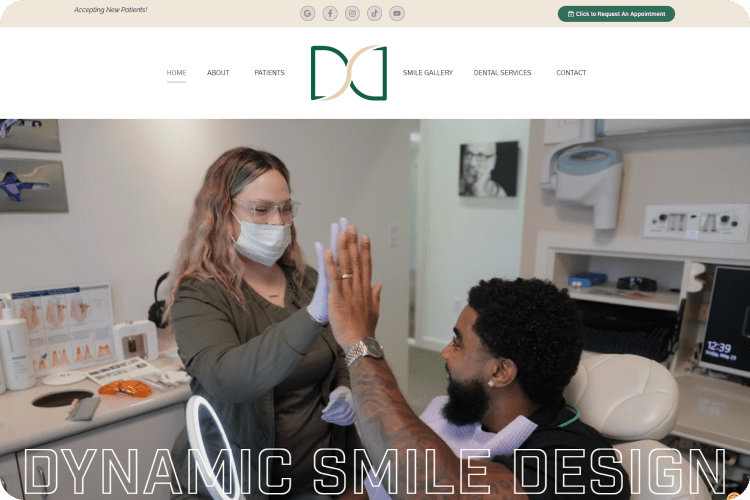
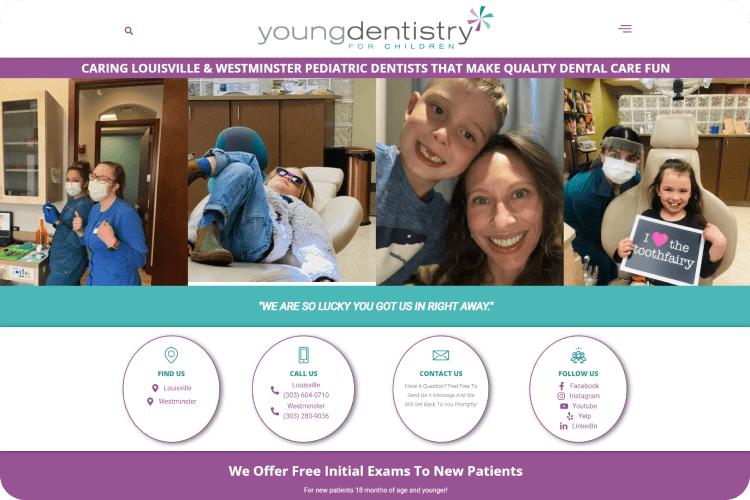
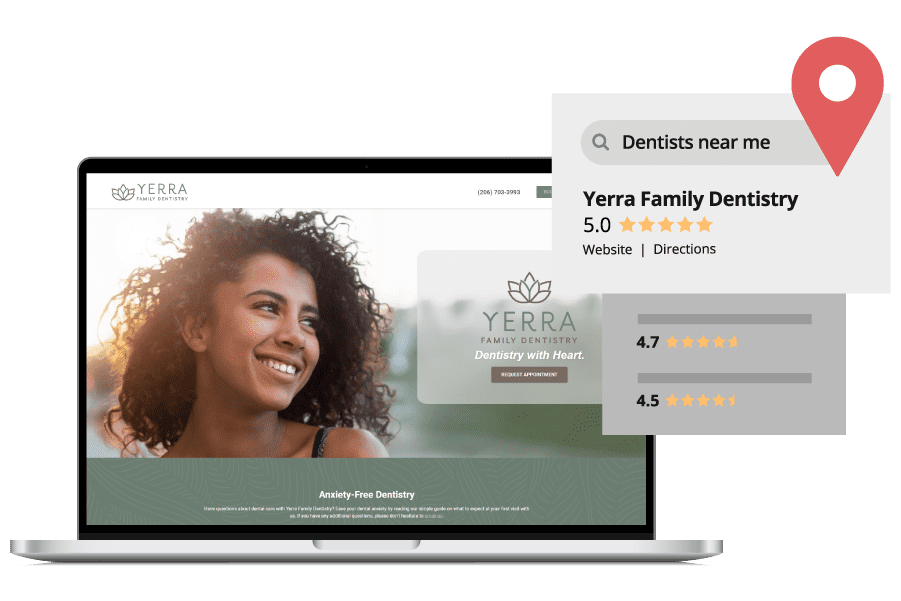

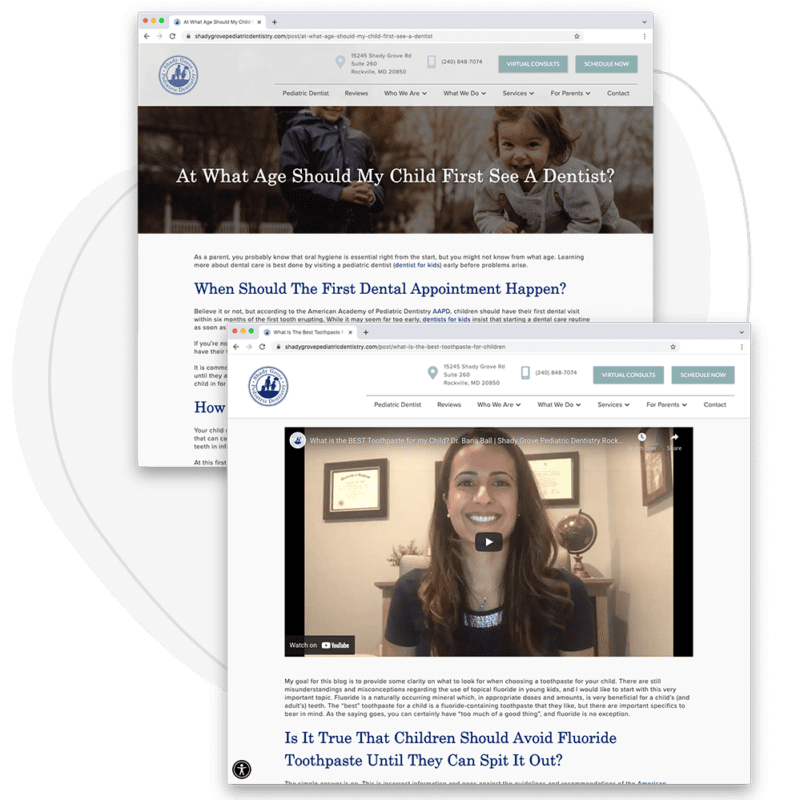
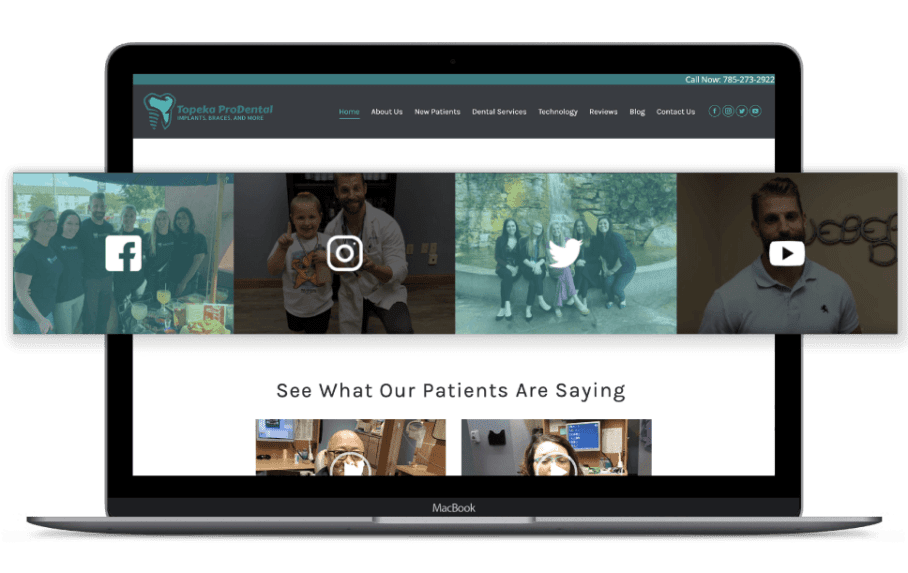

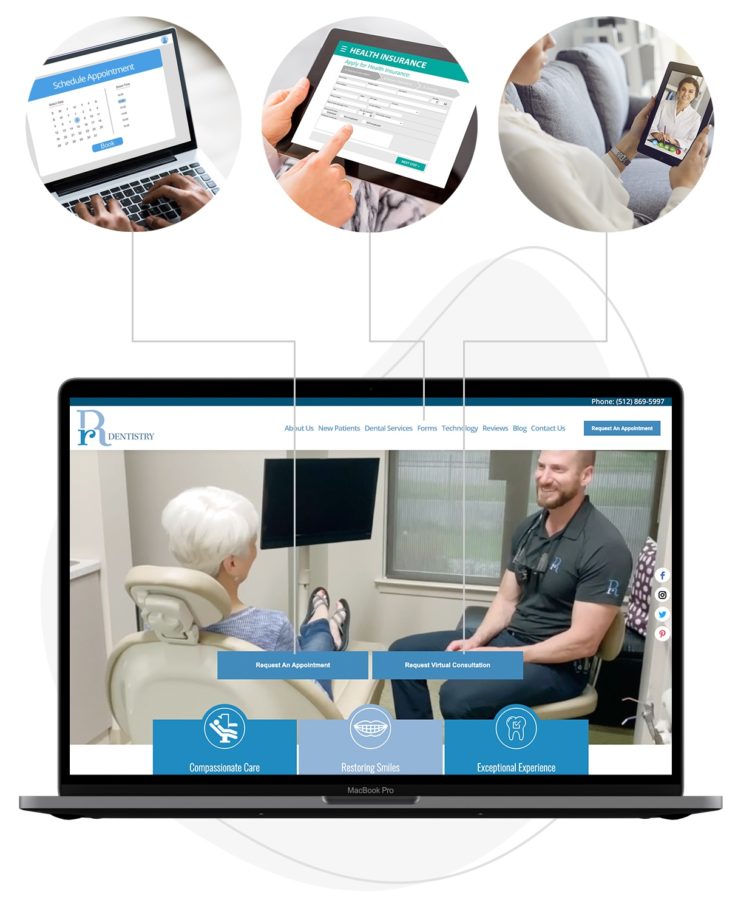

![[Byte Sized Podcast Ep. 23] Frictionless Online Dental Scheduling: Why Your Practice Needs It Now Feat. Colin Ambler - dental website design - My Social Practice - Social Media Marketing for Dental & Dental Specialty Practices online dental scheduling](https://mysocialpractice.com/wp-content/uploads/2025/12/byte-sized_ep23-100x100.png)



